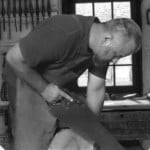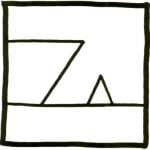What you should know about sandpaper
Welcome! / Forums / General Woodworking Discussions / Wood and Wood Preparation / What you should know about sandpaper
- This topic has 13 replies, 10 voices, and was last updated 7 years, 7 months ago by
 Peter George.
Peter George.
-
AuthorPosts
-
 7 September 2015 at 3:40 am #130135
7 September 2015 at 3:40 am #130135I have attached a screenshot describing the different grades between the US & European which is what the rest of the world uses. For most will have never known this but you do now, so when you read Yankee magazines and blogs they will say sand up to 400 grit but this to us is equivalent to 800 grit.
Anyway enjoy the confusion.
Attachments:
You must be logged in to view attached files. 7 September 2015 at 9:24 pm #130144
7 September 2015 at 9:24 pm #130144Interesting. Being a mathematically-inclined person, I’ve wished for years that we (the U.S.) would adopt metric measures. I guess there are too many idiots running things to get the US on a common system with the rest of the world. The US in particular had a chance in the ’70’s to go metric on all kinds of things, but balked on it. Too much resistance from businesses who would eat some cost in the change-over. Now I’m sure it will never happen because the US system is too far entrenched.
In the mean time, I’ll get sandpaper that has whatever grit I think I’ll need. I’ll never remember this scale.
30 August 2016 at 8:01 am #139771Could anyone suggest an effective way to prevent clogging or remove clogged material from say, typical 150 grit wet/dry abrasive paper? I’m re-doing the finish on a vise handle and finding that the abrasive surface of the paper quickly becomes smoothed over with the removed material. After only two-three passes this happens. At this rate, it can get quite costly as I burn through the paper. This occurs regardless if it’s sandpaper or wet/dry abrasive paper.
Thanks!
Carlos-
This reply was modified 7 years, 7 months ago by
Carlos J. Collazo.
 30 August 2016 at 11:37 am #139786
30 August 2016 at 11:37 am #139786If the sandpaper is getting clogged with old finish, you won’t be able to unclog. Just toss it out.
If it is old finish, start with a courser grit to get the finish off first then go to the higher grits
But if it is clogged with sawdust, wipe the sandpaper on your shop apron. Sawdust comes right off….
 30 August 2016 at 12:20 pm #139787
30 August 2016 at 12:20 pm #139787It’s interesting that the US uses a different system to the rest of the world. It also makes US YouTube videos on blade sharpening very misleading to the rest of us and vice versa.
In Bulgaria I can’t find any sandpaper finer than 400 grit for love nor money. I tried an auto supply shop but was just told to go to the hardware store next door (accompanied by muffled sniggering from the other customers). I guess they don’t repaint their cars over here.
30 August 2016 at 12:46 pm #139788Carlos,
I was running into that problem refinishing an old library. I went at it with a card scraper and had the finish off in no time.
I believe there is a Japanese grit system, too, in addition to the US and European. European-sized grits are quite common in the US, so it is even more confusing to read US info than you think. This is a situation in which I feel both the US and European systems are goofy. Sizing grits with arbitrary mesh size numbers seems antiquated to me and the European system is just as silly as the US system. If, instead, you use the particle size (microns), then everything is clear (until you deal with abrasives that aren’t uniform in size).
Clogged paper- This may not help you in your current problem, but I had to sand some pine that wasn’t properly heat treated. The remaining pitch clogged my paper after just a few strokes. A few things helped, 1) The brand of paper, 2) Reducing the sanding speed (sand cool) and using a vacuum hose to pull away dust 3) Frequently wiping the paper with a cloth slightly dampened with mineral spirits and then clearing the paper with a wire brush. Often, the brush alone was enough to clear the paper. Without #3, it would have been impossible to sand this project.
 31 August 2016 at 3:20 am #139807
31 August 2016 at 3:20 am #139807I’ve found using a better grade of sandpaper helps with clogging. Look for one that has is stearated. In my experience is cheaper in the end because the sandpaper lasts several times longer.
31 August 2016 at 7:10 am #139809A hearty thank you to everyone who helpfully responded to my question re clogged sandpaper. Well, Brett’s suggestion of wiping the paper with a shop apron (side of my jeans in my case) worked a treat! Thanks Brett! The vise handle had a very old, and light finish on it and so it came off with the sawdust which clogged the wet/dry paper. A few strokes of the sanding block against the side of my jeans and the paper was as clean as new!
aarontobul – The card scraper is an excellent idea – would have tried that next had the paper-against-jeans idea not worked. How it did not cross my mind to use a scraper I’ll never know. Probably my limited experience and possibly because I have not been very enthusiastic about sharpening edge tools lately, due to work space and organization problems in my “shop” (garage corner) which I don’t want to get into at the moment, but which I hope to be resolving in the very near future. For various reason, I’ve lacked tables, adquate surfaces to work on, and I’ve been building my first bench on the floor. My mind has been focused on trying to develop some kind of order amid the present chaos.
Interesting job you got – refinishing an old library. Must have been a great learning experience and I bet rewarding too.
Ed- Those are some great tips, man! The wiping with the mineral spirits-dampened cloth is genius and so is remvoing the clog with a wire brush. I am using a good quality wet/dry abrasive paper (3M brand), but I did not think of varying or reducing sanding speed either. Will keep this in my mind as I continue hand sanding for the work bench project.
Peter- Never heard of stearated paper. Will look it up. I’m all for investing a little now to save more down the road. The grade of abrasive paper I’m uisng now I think is of pretty decent quality. I ordered it from Klingspor’s, an online seller of woodworking supplies based in the state of North Carolina, U.S.A. It is 3M brand of paper.
-
This reply was modified 7 years, 7 months ago by
Carlos J. Collazo.
31 August 2016 at 1:36 pm #139818Ha ha, serves me right for rushing. I only refinished an old library table, not a whole library! It was a beautiful old piece made from quarter-sawn oak, but had seen years of abuse in my neighbor’s basement as a workbench and was covered in grime, paint, and oil. Now it sits in my son’s room covered in Legos…
 1 September 2016 at 12:36 am #139841
1 September 2016 at 12:36 am #139841[quote quote=139809]Peter- Never heard of stearated paper. Will look it up. I’m all for investing a little now to save more down the road. The grade of abrasive paper I’m uisng now I think is of pretty decent quality. I ordered it from Klingspor’s, an online seller of woodworking supplies based in the state of North Carolina, U.S.A. It is 3M brand of pape[/quote]
Generally I use 3M No-Load or Norton ProSand. These both have a stearate coating. Also, always use aluminum oxide paper. The silicon carbide (black wet/dry) will leave a black residue on your project. It’s very noticeable on lighter woods. Don’t ask how I know this. 🙂
-
This reply was modified 7 years, 7 months ago by
-
AuthorPosts
- You must be logged in to reply to this topic.
